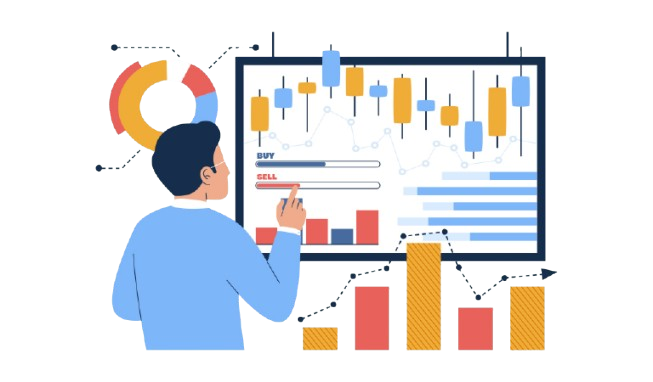سبدگردان اطلس با بیش از سال ها تجربه در زمینه مدیریت دارایی و سرمایهگذاری، به شما این امکان را میدهد که سرمایهگذاریهای خود را با اطمینان و تخصص به نتیجه برسانید. ما با تحلیلهای دقیق، استراتژیهای هوشمندانه و تیمی از کارشناسان مجرب، در کنار شما خواهیم بود تا بهترین بازدهی را از سرمایهگذاریهای خود به دست آورید




با انتخابهای دقیق، به شما کمک میکنیم تا به سودآوری بلندمدت و رشد پایدار دست یابید و سرمایه خود را به بهترین شکل ممکن مدیریت کنید.

تیم ما با خرید و فروش مستمر و مدیریت دقیق بازار، به ایجاد بازاری روان و منظم کمک کرده و از نوسانات قیمتی جلوگیری میکند.

تیم پشتیبانی اطلس با تکیه بر دانش روز و تجربه در بازارهای مالی، در تمام مراحل همراه شماست و به رفع مشکلات و پرسشهای شما میپردازد.

با تحلیلهای جامع و بهروز از روندهای بازار، به شما کمک میکنیم تا تصمیمات سرمایهگذاری هوشمندانهتری بگیرید و از فرصتهای بازار بهرهمند شوید.

ارائه خدمات سبدگردانی به سازمانها و نهادهای حقوقی، مانند شرکتها، صندوقهای سرمایهگذاری و نهادهای دولتی.
خدمات :مدیریت داراییهای سازمانی و ارائه مشاورههای خاص متناسب با نیازهای مالی نهادهای حقوقی.
تدوین استراتژیهای سرمایهگذاری بلندمدت و کوتاهمدت با توجه به شرایط بازار و وضعیت اقتصادی.
استراتژیها :استراتژیهای رشد، ارزش، درآمد ثابت و متعادل که متناسب با وضعیت مالی و اهداف سرمایهگذار طراحی میشود.
راهاندازی و مدیریت صندوقهای سرمایهگذاری با داراییهای متنوع به منظور افزایش سودآوری و کاهش ریسک.
خدمات :تحلیل و انتخاب ابزارهای سرمایهگذاری برای صندوقها و پیادهسازی استراتژیهای مناسب برای مدیریت صندوق.
در دنیای پر از نوسانات اقتصادی و تغییرات سریع بازار، انتخاب یک سبدگردان حرفهای و قابل اعتماد برای مدیریت سرمایه شما از اهمیت ویژهای برخوردار است. سبدگردان اطلس با تجربه، تخصص و رویکردی نوآورانه، یکی از برترین انتخابها برای کسانی است که به دنبال امنیت، بازدهی بالا و مدیریت ریسک هوشمندانه هستند. اینجا چند دلیل مهم برای انتخاب ما آورده شده است
آشنایی : جلسه حضوری با تیم اطلس و معرفی سبدگردان اطلس به سرمایهگذار، تکمیل فرمها و پرسشنامه و امضاء قرارداد.
تحلیل و تصمیم گیری : شناسایی اهداف و محدودیتهای مشتری و تعیین سطح ریسکپذیری، بررسی ویژگیهای مشتری در تیم تحلیل و تعیین استراتژی سرمایهگذاری.
اجرا : بررسی وضعیت اقتصادی ایران و جهان، تحلیل و ارزیابی صنایع و طبقات دارایی، انتخاب دارایی مطلوب متناسب با نیاز مشتری.
ارزیابی عملکرد : محاسبه بازدهی سبد و مقایسه با وضعیت بازار، محاسبه شاخص ریسک و نظارت بر عملکرد تیم سبدگردان، ارسال گزارشهای تحلیلی و دسترسی بر خط سرمایهگذار بر سبد داراییها، ارسال گزارش عملکرد به مشتریان.

صندوقهای سرمایهگذاری در بازار سرمایه ابزارهایی هستند که با جمعآوری سرمایه از سرمایهگذاران مختلف، آن را در سبدی متنوع از داراییها برای کسب بازدهی بیشتر مدیریت میکنند.

ما در هر قدم کنار شما هستیم
معمولاً سبدگردانها از مشتریان خود درصدی از سود یا هزینهای ثابت بابت خدمات مدیریت سبد دریافت میکنند. جزئیات دقیق هزینهها را میتوان از طریق مشاوره با سبدگردان اطلس دریافت کرد.
این مبلغ ممکن است بسته به نوع خدمات و شرایط مختلف متفاوت باشد، بنابراین بهتر است با سبدگردان اطلس تماس بگیرید تا جزئیات دقیق را دریافت کنید.
برای سرمایهگذاری، باید با سبدگردان اطلس تماس بگیرید و فرآیند ثبتنام و پذیرش ریسک را انجام دهید. سپس میتوانید مبلغ سرمایهگذاری خود را تعیین کرده و سبد سرمایهگذاری خود را شروع کنید.
سبدگردان اطلس خدمات مختلفی شامل مدیریت سبد سرمایهگذاری، مشاوره مالی، تحلیل بازار، و سرمایهگذاری در انواع داراییها ارائه میدهد.